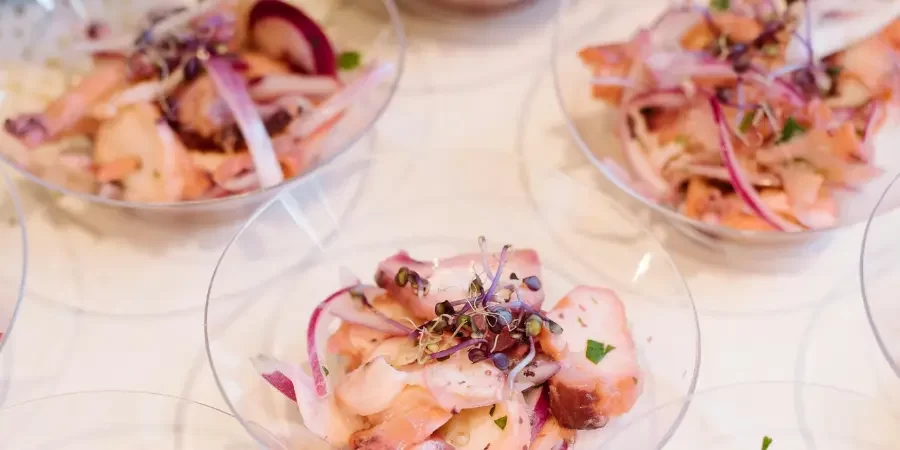The cevichea culinary delight originating in Latin America, is distinguished by its blend of fresh and vibrant flavours, with fish being the main protagonist of this exquisite preparation.
This dish is composed of delicately chopped pieces of raw fish paired with citrus juice. In addition, aromatic herbs and a variety of ingredients such as tomatoes, onions, and sometimes seafood such as shrimp, octopus, squid and scallops are usually incorporated to further enrich the flavour.
Although the dish is not heated, the acidity of the citrus plays a crucial role in "cooking" the raw fish, ensuring its food safety. As with almost all culinary preparations, the quality of the individual ingredients will be key to its ultimate success. Therefore, choosing the right fish is the essential starting point.
How to choose the fish for your ceviche?
If you want to know which fish is the most recommended when preparing ceviche, let me tell you that there is no single option. In fact, there are numerous alternatives that can be adapted to perfection, so in this article we will explore some of the most common ones.
As with the sushiThe best fish for ceviche should be of high quality or "sashimi quality". Sashimi quality refers to the freshness and purity of the fish, ensuring that it is suitable to be eaten raw.
In addition, we recommend that you opt for varieties of white fish firm, medium-firm and lean. Among the most suitable options are sea bass, tilapia, rockfish, sea bass, mackerel and sole. Additionally, you can always add seafood to enrich the variety of textures and flavours in your ceviche.

Why is it important to consider the firmness of the fish for ceviche?
The process of marinating the fish will cause the texture to soften. Therefore, starting with a firm variety will ensure an optimal final consistency, preventing it from becoming too soft.
On the other hand, white fish with a firm consistency generally tend to have a more delicate taste. Consequently, this means that it is easier for them to absorb the additional flavours of the other ingredients.
Tips for making tasty ceviche
Avoid fibrous fish
The cod and hake have a fibrous flesh, excellent for other recipes, but not recommended for ceviche. In particular, because they could end up being too tough after the citric acid marinating process.
Fish hygiene and cleaning
It is recommended that you remove the bones and backbone of the fish you are going to use in the recipe before cutting it into cubes. This will ensure a more pleasurable culinary experience when enjoying your ceviche, avoiding any inconvenience of finding unwanted parts when eating it.
Also, by removing the bloodline from the fish, you will contribute to a more delicate and balanced taste to your ceviche, without the fishy taste being too pronounced.
Cut the ingredients into a similar and uniform size.
It is vital to cut both the fish and the spices into evenly sized pieces. This process will facilitate the marinating of the fish and provide a visually harmonious appearance of the final dish.
Prepare an adequate amount of marinade
When making the citrus juice for the marinade, it is essential that you have enough of this mixture so that the fish pieces are completely covered. A useful guideline is to use about 1 cup of citrus juice for each kilogram of fish you are marinating.
Just the right amount of cooking
After mixing the cut fish with the marinade, it is important to cover the container and refrigerate it during the cooking time. It is crucial to achieve the perfect doneness, avoiding both the fish becoming undercooked and the fish falling apart when overcooked.
As a general rule, it is suggested to leave the fish pieces for 10 to 20 minutes covered by the marinade. One of the best techniques to check if the preparation has reached the ideal cooking point is to cut one of the pieces of fish. Then, if you notice that this piece is cooked inside, you can take your colander and remove the juices.
Add the spices immediately before presenting the dish.
Wait until the last moment to add the spices. This way the spices will retain their crunchy texture instead of becoming soggy. This in turn will prevent the fish from changing colour or taking on the colouring of the other ingredients.
We hope these suggestions will help you to achieve an exquisite ceviche. Don't forget to visit our online shop to supply you with the best seafood products delivered directly to your door.







